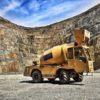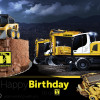Tire Talk: When and the Proper way to Replace Scissor Lift Tires
A lot is riding on your scissor lift tires. They are the vital link between the machine and the ground, as well as your operating safety by providing traction and stability. Tires get you to where you want to go, both non-marking that leave no traces behind and treaded to traverse rough terrain.
The nature of where these machines operate — from congested construction sites to rough outdoor terrain — can lead to tire damage, which requires close attention and frequent inspection. Following these inspection and replacement tips will help give you the confidence that your scissor lift will take you where you need to be:
Tire type…
- First and foremost, know what type of tire is on your scissor lift.
Slab scissor lifts come standard with solid hard-rubber non-marking tires, whereas a rough-terrain scissor lift could be equipped with one of several tire types: Solid non-marking, lug pattern (foam- or air-filled) or high flotation (foam- or air-filled).
Inspection tips…
- Inspect tires for damage to the tread area and sidewalls (cuts, tears, missing chunks, etc.).
If there is any damage to the tire, it should be replaced.
- Inspect solid rubber tires.
Ensure the solid tire is completely bonded to the rim. If there are any signs of tire separation from the rim, the tire should be replaced.
- Ensure a static strap is installed on the machine when inspecting units with non-marking tires.
When the carbon is removed from the non-marking tire (gray or white), a static charge build-up occurs. The static strap will dissipate this charge to help protect onboard electronics.
Tire replacement…
- Replace with like tires.
Tires provide a part of the machine’s stability and offer traction. Replacing with like tires maintains the machine’s designed stability. Note that foam-filled and air-filled tires must be replaced with like tires. Never mix foam-filled and air-filled tires on the same unit.
- Replace more than just the tire showing heavy wear of 50% or less tread remaining.
Change the other tire on the same axle, not just the bad tire. This allows the machine to maintain its stability for enhanced operating safety.
- Not all foams are created equal.

Not just any foam will work. Make sure the foam used in the replacement tire offers the same weight equivalent and hardness as the replaced tire. Some lighter weight foam products are available on the market than what is standard for Genie tires; using a lighter weight foam product can take away from the stability of the unit.
One parting tip related to your tires. Make sure the lug nuts maintain the proper torque. The lug nuts should be torqued whenever a tire is replaced or during the scheduled annual inspection.
source: http://www.genielift.com/en/













